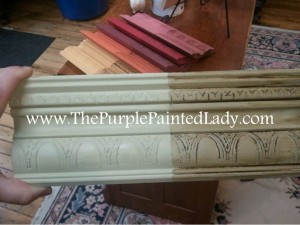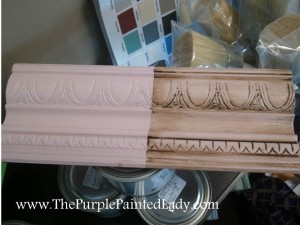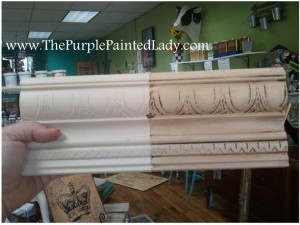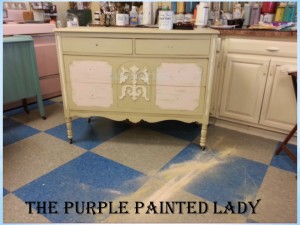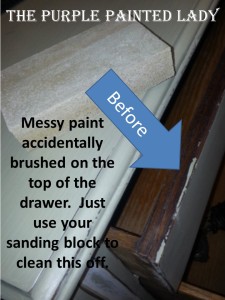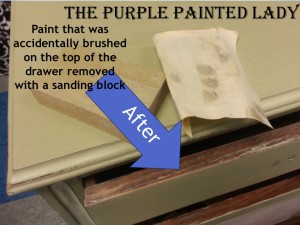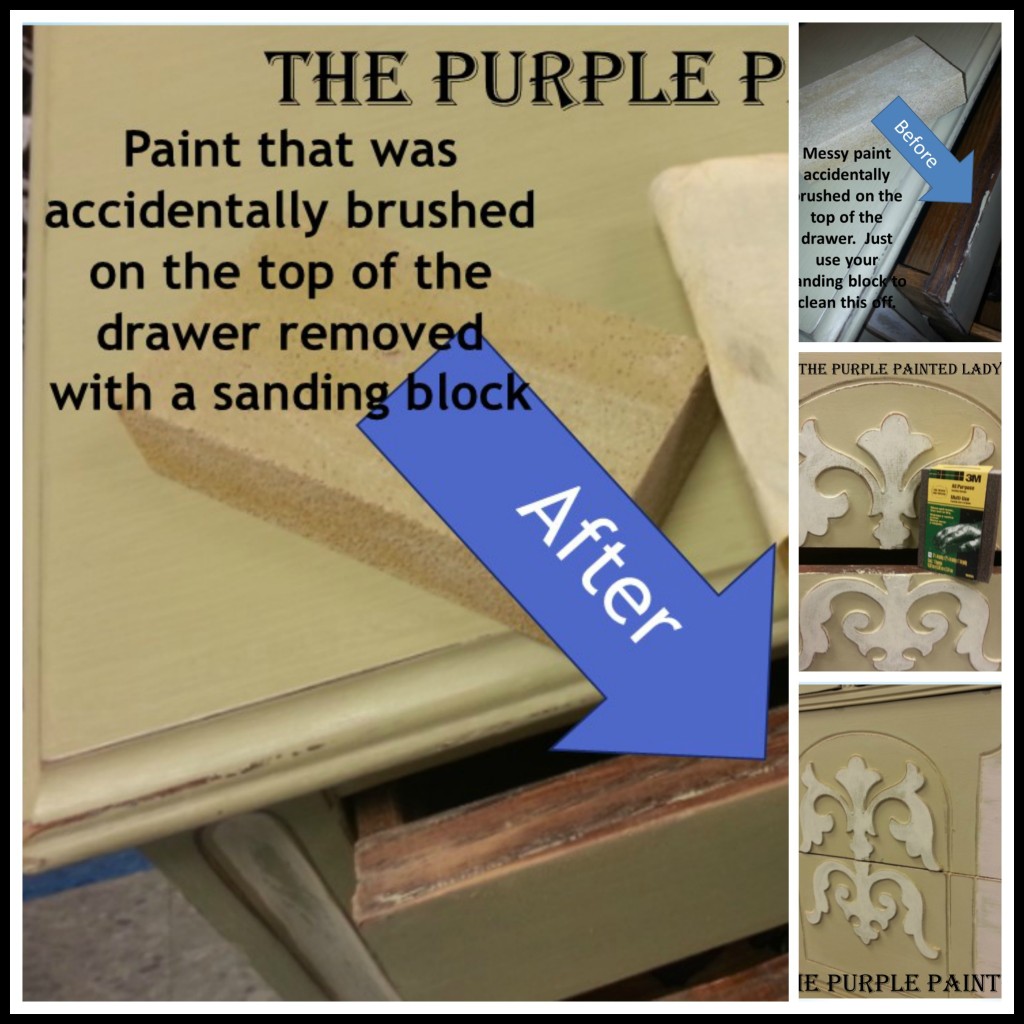The question to sand and distress Chalk Paint® before versus after applying clear wax is a very common question. I asked it too, when I first started using Annie Sloan products. So, I hope this small post about this cute dresser helps you.
I love the combination of Versailles, Antoinette and Old White Chalk Paint® decorative paint by Annie Sloan.
I decided to use them all on a vintage dresser we are painting. Although I did mix a little Old White & Pure White into the Antoinette to soften the pink even more.
Once the was all dry, I grabbed a “Medium to fine” sanding block because I wanted to soften the look of paint and give the piece a weathered/worn look.
Personally, I like to sand Chalk Paint® before waxing. The reason I prefer that, is to me- it is less effort. I typically will sand using 200 or 220 grit sandpaper or sand sponge. I never use a power sander. I like to “feel” the piece and it does not take much effort (muscle power) at all to do this step. I like how the Chalk Paint® is polished and the end result, is a silky smooth surface.
Another reason I prefer to sand before applying clear wax, is that often- for pieces I am keeping in my one home, I usually only apply one coat of wax (two on the top though.) So, because I only apply one coat of wax over the sides of the dresser and drawers- I do not want to sand that one coat off- which will mean I need to apply another coat of wax.
For pieces that we sell at my shop though, I always do a minimum of 2 coats of wax since I do not know how the piece will be treated once it is sold. (I sometimes say there are people who use furniture, and then there are people who abuse furniture.)
See how much is on my shop floor?
So, because of this
Again, since I sometimes like to apply one coat of wax- so I do not like to distress once it is on.
Now with that all shared, I will still sometimes take some triple zero steel wool and rub that over a finished piece that has been waxed. This changes the sheen of the waxed surface to more of a high sheen and it will feel smooth as glass.
I also like to use a sand block or sand paper to remove paint that accidentally gets onto a spot that it should not be. For example, on the top of a drawer or side of a drawer.
The Purple Painted Lady sells Chalk Paint® on-line and we always ship same day! In fact- there are many reasons we think buying through us is the best. Read THIS little post about what sets The Purple Painted Lady apart from the rest.
To visit our on-line store- click HERE.
Lastly, we share a lot more information to help you get the most functionality out of your Chalk Paint® on our Facebook page. Consider checking it out by clicking HERE. While there- kindly consider LIKING us.
Thanks again,
Tricia Migliore Kuntz ~The Purple Painted Lady ~
Design/Consulting, Kitchen Cabinet Refurbishing, Custom Painted Furniture, Chalk Paint® & MMS Milk Paint Retailer & herRochester Blogger
PHONE: 585-750-6056
Come visit us:
At our MAIN STORE at 77 West Main Street in Macedon, NY 14502 OR
3200 West Ridge Road in Rochester, NY 14626 (The Shops On West Ridge) OR
Our Syracuse, NY location at 2017 Milton Avenue in Solvay, NY 13209

